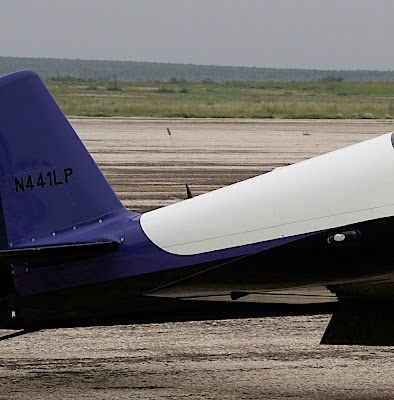Just have to disagree; as it's a tough call to say what's a compromised installation; as in top of plane versus the fiberglass tail fairing. L.Adamson --- RV6A
Ummmm... Don't want to sound too argumentative here, but it's not at all a tough call. The fiberglass tail fairing installation IS a compromised installation, and a pretty severly compromised one at that. The ELT antenna radiation pattern that provides best probability of rescue is an omni-directional pattern, ie radiating equally in all directions. The tail fairing installation will produce a radiation pattern that is not omni-directional - far from it. I have not done a field measurement on this installation in particular but have done surveys on similar installations and the radiation patterns were pretty ugly, definitely nothing like omni-directional, with a deep notch where almost no signal was radiated directly to the rear of the aircraft. With this being the case, doesn't matter whether your airplane is right side up or upside down, your ELT may not be detected as a result of this disfigured radiation pattern.
One other comment on aircraft flip-overs... Let's face it, this is a big concern to all of us, irrespective of which aircraft we fly. If you were to string a wire between the top of the vertical stab and the back of the baggage compartment, any "stick" type antenna that's installed beneath that wire is pretty well protected if the aircraft flips on its back. Most airplanes, and particularly the RV's, are built strongly enough that the empennage survives reasonably intact, with the vertical stab acting as a brace to stop the fuselage from settling to the ground and crushing the antennas mounted on the spine of the airplane.
There have been lots of comments made about SPOT and PLBs, and a certain "rich guy from California". But let's be honest. Few of us know that we're going to crash. Heck, if we knew in advance that we were going to crash, well, we'd take steps to avoid crashing, wouldn't we? The reality is that most of us get caught up in situations which deteriorate so rapidly that hitting that 911 button on SPOT or holding down the switch on the PLB for 3 seconds just isnt' going to happen. In the case of the rich guy from California, do you think Steve, an extremely accomplished pilot, had time to do ANYTHING before he smacked into that granite overcast? An overwhelming body of evidence allows us to conclude that manually activated beacons just don't work because the crash has happened before we could even reach for the beacon. That's why automatically-activated devices called ELT's were developed in the first place.
For those who don't have faith in ELTs I would urge you to seriously consider the origins of that lack of faith. Keep in mind that our statistical information lumps all ELTs together, including those very earliest ELTs which by today's standards are seen as being pretty crude and highly unreliable. If we were able to separate the data by ELT TSO type then we would see that each generation, from TSO C91 to C91a to C126 (the current 406MHz standard) offers substantially improved performance over its predecessor. If you don't have faith in ELTs its because you're looking at history, not at current state-of-the art. Applying the same logic to airplane engines, if we looked only at the statistics from the early years of airplane engines, the reliability would be so low that very few of us would risk going flying. (Fortunately engine reliabilty stats have been updated and are available to us on a "per type" basis, completely unlike our ELT reliability stats...) Take a hard look at the new 406MHz ELTs - they really are a totally different animal than their predecessors. Canadian experience to date with these devices is extremely positive.
The RV8 presents a real challenge for antenna installation. My hangar-mate's -8A has a reasonably good compromise in its ELT antenna installation. It's mounted slightly off-center and points out at an angle so it's not totally vertical. But it's got a pretty clear view of the sky, is as far away from metal structure as is possible, and makes a nice place to hang your jacket (only kidding, really!). As Ironflight commented, it's best to understand what makes an optimal installation and then strive to achieve that optimal installation within the other limitations imposed by the airframe.
OK, time for me to get off my soapbox. I'm a firm believer in ELTs. Not because as a licensed AME I sometimes install them for friends. But because a good friend of mine owed his life to an unrecognizeable lump of melted plastic that at one time had been a Narco ELT-10. The post-crash fire consumed the aircraft but the ELT kept bleating out its plaintive call. The day I saw the remains of that ELT is the day I became an ELT advocate. There, but for the grace of God, go I...










